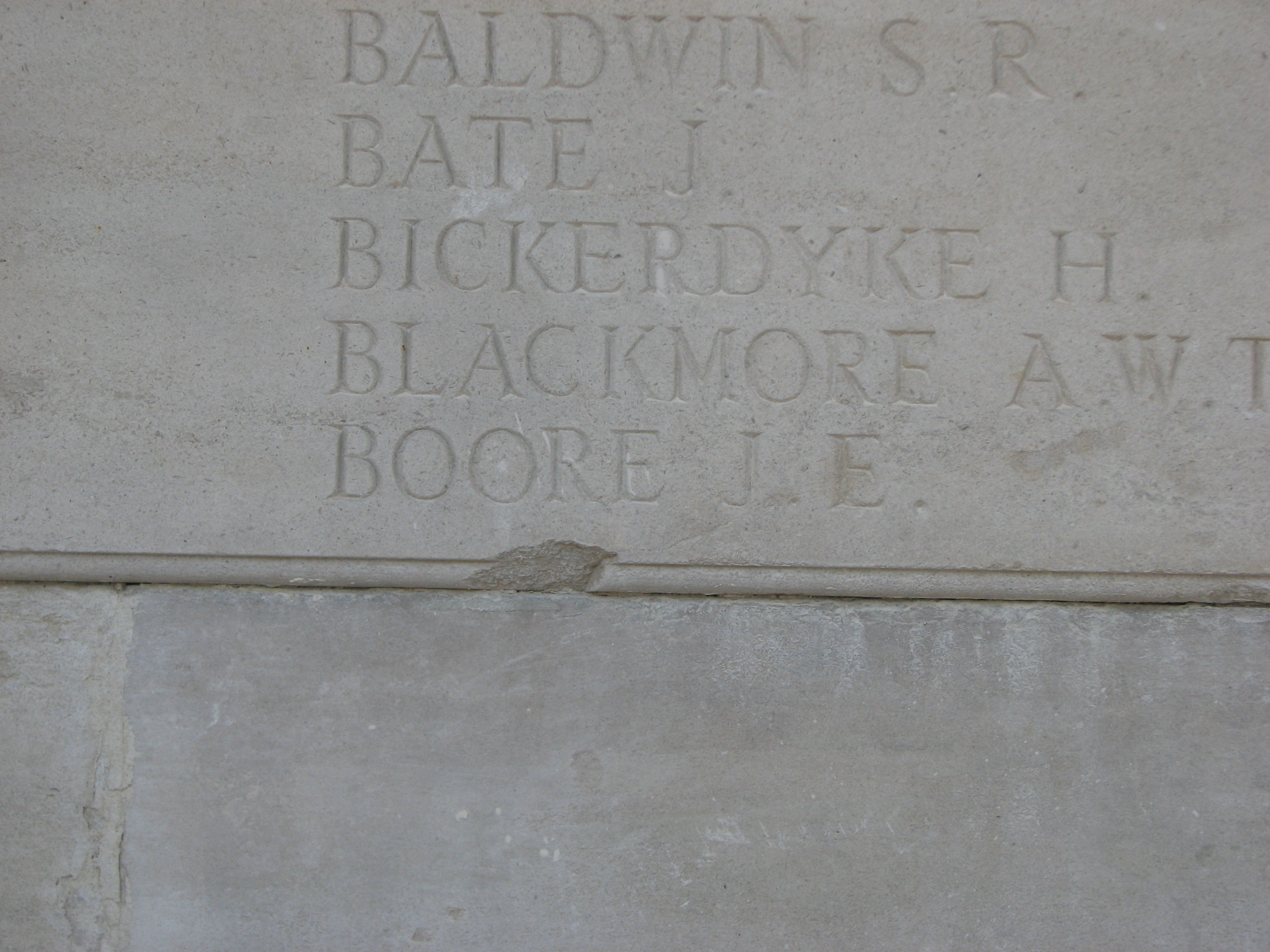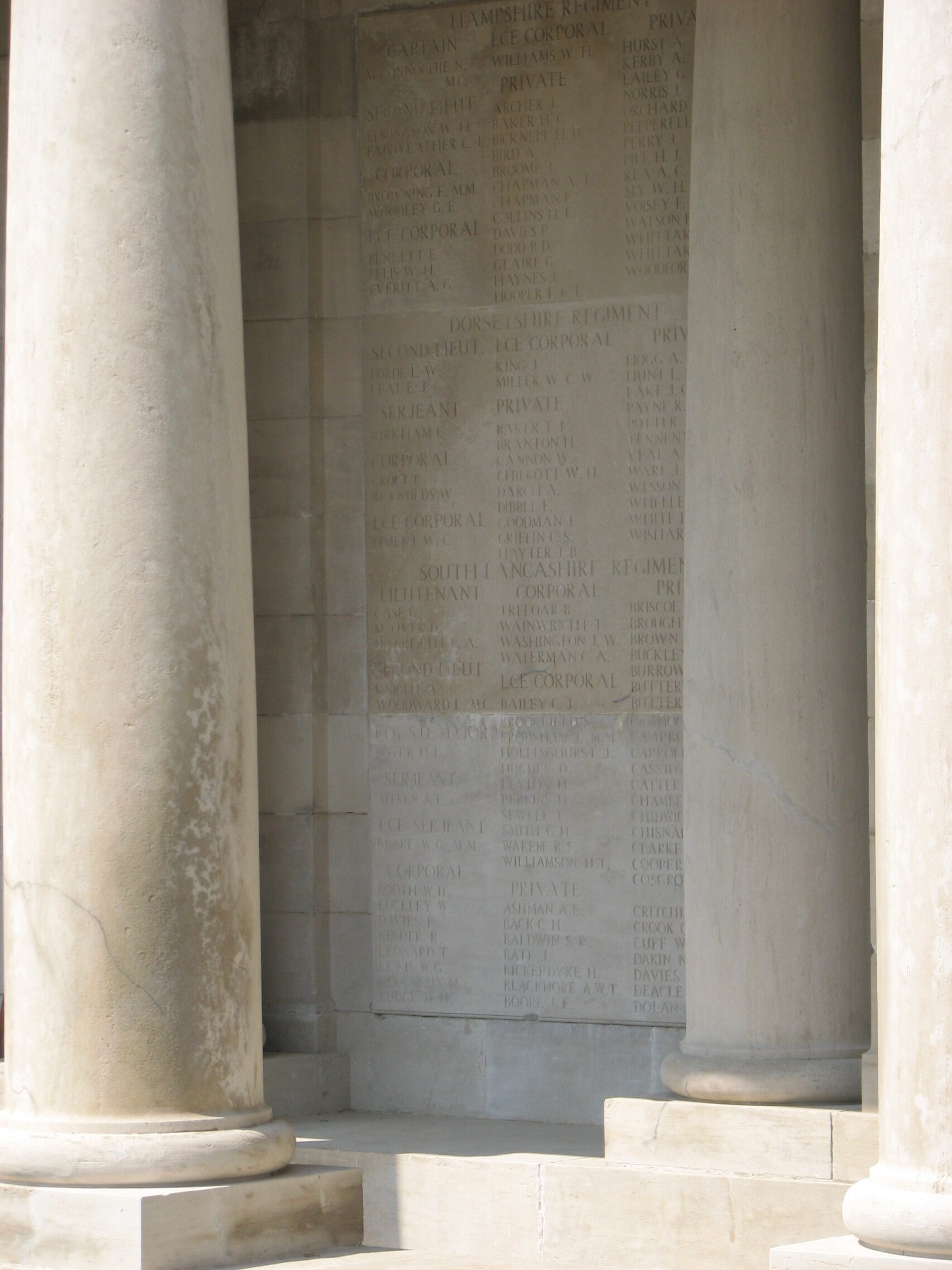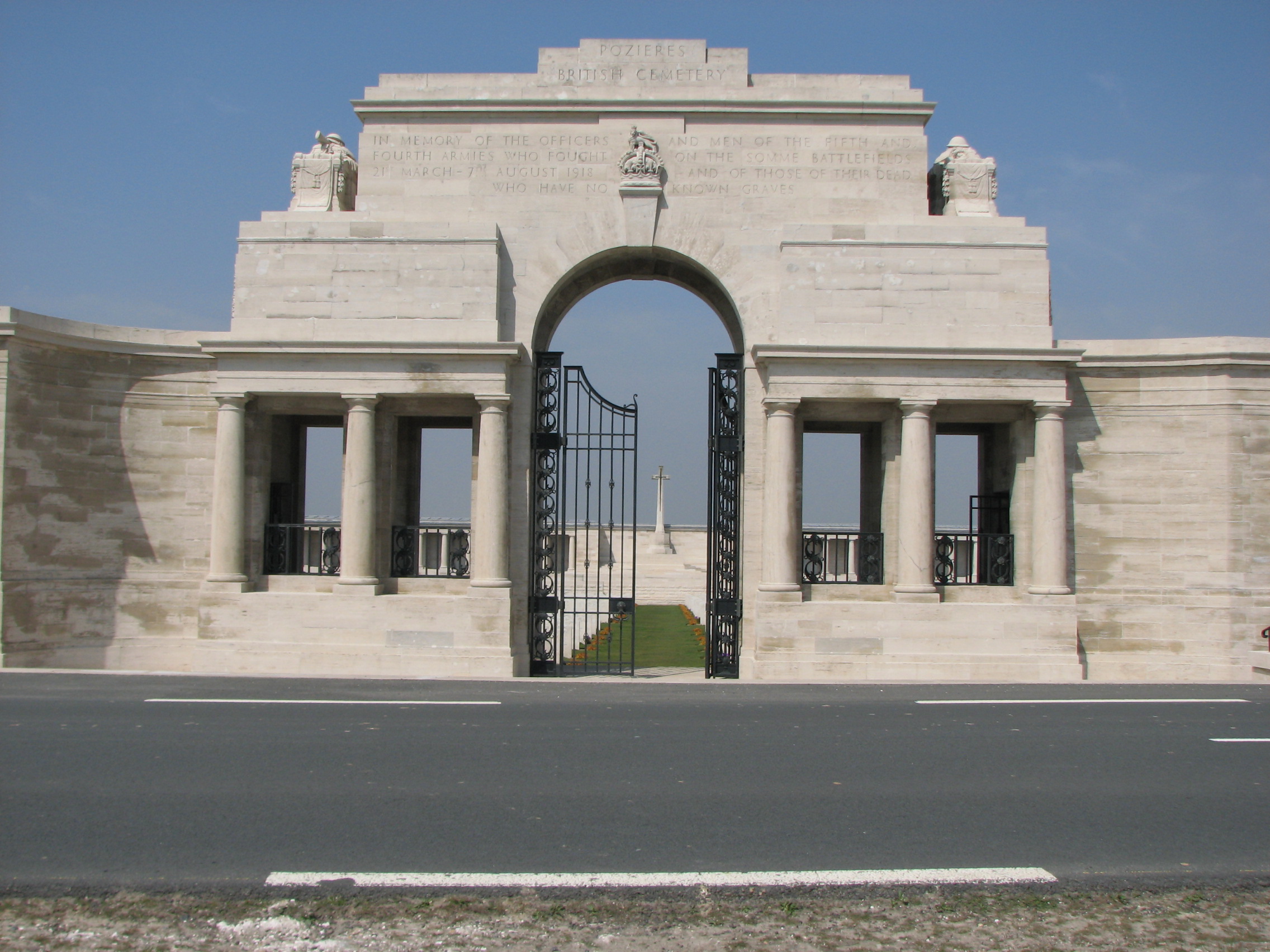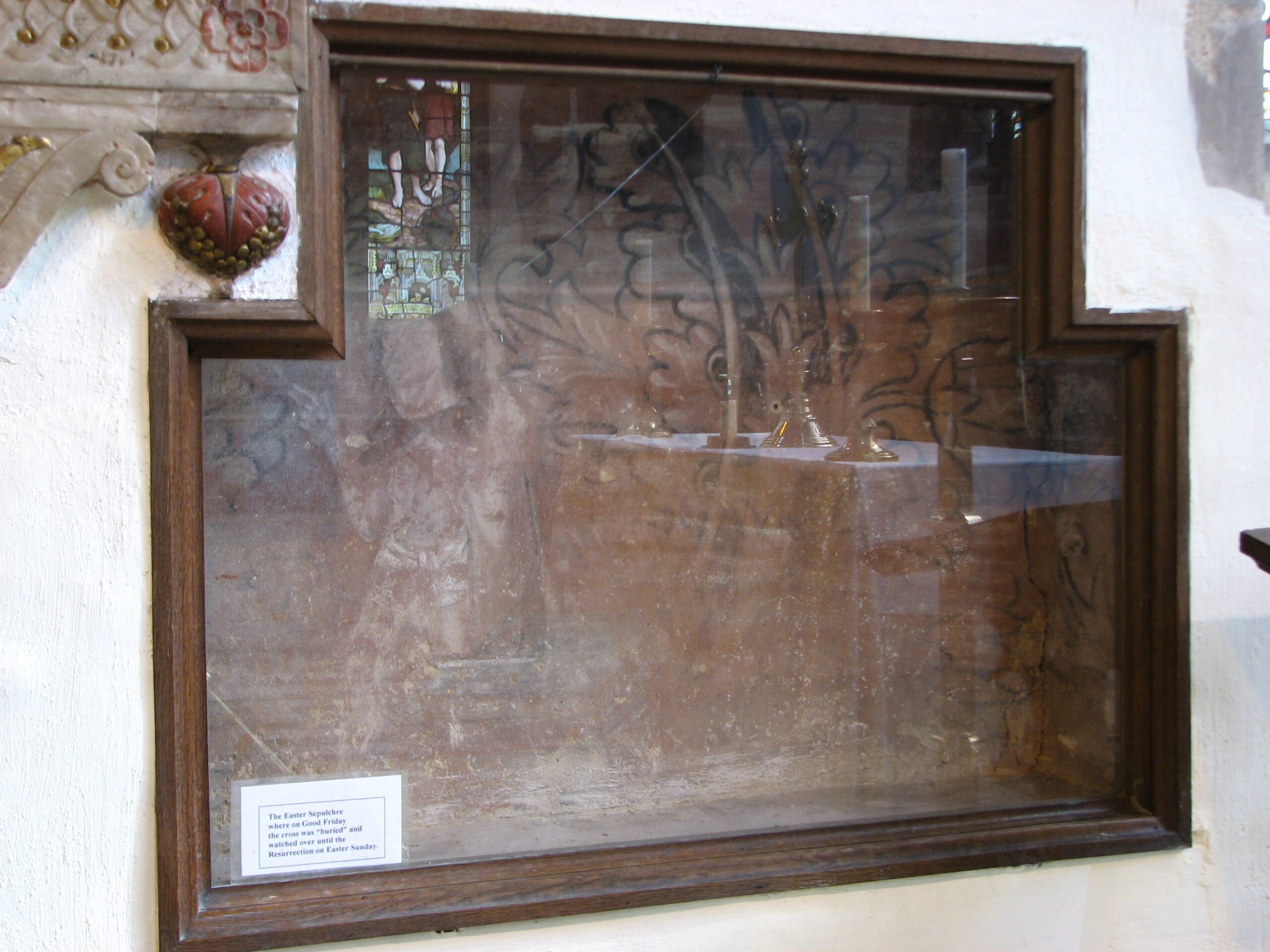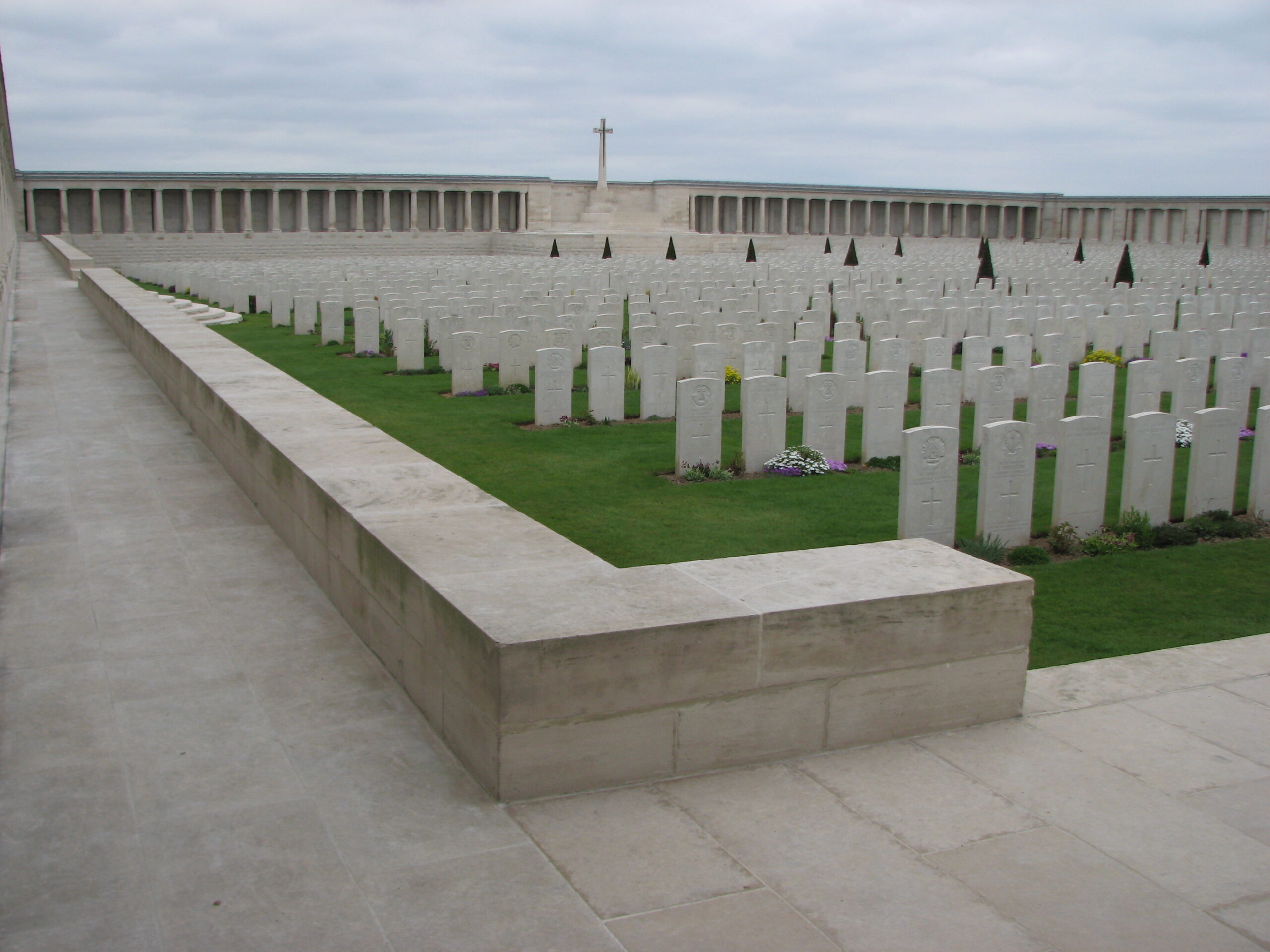James Boore (1882 - 1918)
James was working as a Postman at the time he was conscripted into the Army in 1916. He was formally “called up” the following year and served in France with 11th Battalion, the South Lancashire Regiment. James was killed in action near the town of Ham, on the third day of the great German Offensive in March 1918.
- 13
- Died in the Great War
- 51.977096, 1.017533
Details
| Name: | James Edgar Boore |
| Service: | British Army |
| Unit: | 11th Battalion, South Lancashire Regiment |
| Regimental Number: | 32641 |
| Rank: | Private |
| Date of Death: | 23rd March 1918 |
| Age: | 36 |
| Commemorated: | Panel 48, Pozieres Memorial, near Albert, France |
It is in large part thanks to James Boore, that visitors to St. Mary’s Church are now able to view the medieval Easter Sepulchre, located in the north wall of the Chancel. Sadly James did not live to see it, as he was killed in action in France two years before it was re-discovered. 1 In his book “East Bergholt in Suffolk” (printed for private circulation by W. Lewis University Press Cambridge, 1923), the then Rector of East Bergholt, T.F. Paterson wrote:
“In the north wall of the chancel is an Easter sepulchre recess. We owe the discovery of this interesting relic of the past to one whose name is inscribed on our War Memorial, James Edgar Boore, whose life was given for his country in France in 1918. He told me that his grandfather, when doing some mason’s work in the church had broken into a hollow space in the wall, where he could see a figure, and had wished to explore further, but the then rector, Dr Woolley, directed him to close up the opening again. James Boore could not point out the spot: but I questioned his mother, who said she had often heard her father speak of it, and she told me where to find it. From the position, I began to expect what it was that lay concealed there; and in 1920 we opened the wall, and found an arched recess”.
An Easter Sepulchre is a feature of medieval church architecture found only in England and Wales, in which from Good Friday to Easter day were deposited the crucifix and sacred elements in commemoration of Christ’s entombment and resurrection.
Family Background and Early Life
James Edgar Boore was born at East Bergholt on 30th January 1882, the only son of Sylvia Boore. Sylvia had been born and raised in East Bergholt, and at the time of James’ birth her occupation was given as a Housekeeper. She never married, and in later years Sylvia also worked as a Charwoman, and a Laundress.
James’ early years were spent living with his mother and her Aunt Sarah. It is probable that Sylvia’s father, Thomas Boore also lived with them until his death in 1884. The 1881 Census shows the Boore family living on Ipswich Road, but by 1891 they had moved to 3 Harold Cottages.
James spent 5 years as a pupil at the village school at Burnt Oak Corner, starting there in June 1886. The surviving evidence suggests that he left in 1891, having reached the minimum school leaving age.
At some point between April 1891, and April 1901 James and his mother moved to Gaston Street, which remained their home for the rest of his life. James’ Great Aunt Sarah had passed away in 1894, at the age of 81, but it is not known whether the family had moved to Harold Cottages by then.
Working Life
James had a variety of jobs during his life. In 1901 his occupation was described as a Breadmaker, and Journeyman Baker, but by the following year he was employed as a postal worker around Beaumont and Weeley, in Essex. The 1911 Census shows James’ occupation as a Gardener, though by August 1916 he was employed as a Postman again.
During 1915, despite various efforts made by the government it became evident that voluntary recruitment was not going to provide the increasing numbers of men required to carry on with the War. As a result of this, the Military Service Act of 27th January 1916 introduced conscription. All British males residing in Great Britain (excluding Ireland), who were either single or widowed as at 2nd November 1915, were then deemed to have enlisted on 2nd March 1916. James was one of those affected by this measure.
Conscription
On 23rd August 1916, James attended an Army medical examination at Ipswich, and although his physical development was described as good the Medical Officer found sufficient grounds to only class James as being fit for home service.
Just over 4 months later on 6th January 1917, James was officially called up and was posted to the 18th Battalion of the Hampshire Regiment based at Aldershot, and later Colchester, to undergo his basic training.
We know that in early May 1917, James was based at Reed Hall Camp at Colchester. Following a short, authorised weekend visit to his mother in East Bergholt, James then disappeared for nearly three weeks before reporting back at the Camp. His punishment for this offence was 14 days detention.
James was posted to the 16th Battalion of The Queen’s (Royal West Surrey Regiment), seemingly in September 1917. This battalion was for men who had been medically graded for home service only. By this time it was based at Colchester, and was responsible for coastal defence in that area.
James was later transferred again – this time to the 4th Battalion of the Monmouthshire Regiment. The 4th Monmouths were another unit formed of Home Service personnel, and at the time that James was with them were based on the north Norfolk coast around Mundesley.
It was late October 1917, whilst he was with the 4th Monmouths that James underwent another medical examination. This time he was given a medical category of B1, which meant he was fit for service abroad in a support capacity.
France
On 29th December 1917, James was transferred to the South Lancashire Regiment. Whether he had already been posted to France by then, or whether he went on or around that date, is not totally clear. Certainly by mid January 1918 at the latest James had joined the 11th Battalion of the South Lancashire Regiment serving in France. 2 The 11th Battalion of the South Lancashire Regiment, were known as the “St Helen’s Pioneers”, in honour of the Lancashire town from where most of the unit’s original Non Commissioned Officers and men were drawn, when it had first been formed in 1914.
The 11th Battalion was the Pioneer unit of the 30th Division. A Pioneer unit had a dual role – they were trained and equipped for normal infantry fighting, but were also employed in the role of “general handyman” to the division with which they served. In the front lines the Pioneers were responsible for all trenchwork, including any posts dug out in No Man’s Land between the British and German trenches. Behind the lines they also worked on such tasks as constructing rail and tramlines, waterpipes and dug-outs. It was demanding and dangerous work.
Early in 1918 the 30th Division was sent south to take over part of the line from the French from just above Laon to St-Quentin. The 11th South Lancs arrived in the area on 14 January, and remained there until early March. Most of the unit was involved in the renovation of billets, and the improvement and preparation of defence lines, but six of the Lewis-gun sections went to provide anti-aircraft defence.
The Battalion was moved to a location close to the front lines, approximately 3 miles south-west of Saint-Quentin, in early March. From there, they continued in their pioneering duties.
The German Spring Offensive
In early 1918, The British Expeditionary Force (B.E.F.), were suffering from a manpower crisis, in part caused by the heavy fighting of the previous year, and also efforts by the British Prime Minister (David Lloyd George) to restrict the number of troops being sent to the Western Front. In contrast, the German Army on the Western Front had received a massive influx of manpower, having been able to transfer many divisions from the Eastern Front where the Russians had signed an Armistice in December.
The Germans seized this opportunity to break the stalemate on the Western Front and tried to destroy the B.E.F., knock the British out of the war, and in the process hopefully make the French sue for peace before the United States brought in increasing numbers of troops.
The British knew that an attack was coming, but they did not know where. The Germans launched the first in what would be a series offensives, in the early hours of 21st March 1918. 65 German divisions launched a massive onslaught against 26 weakened British divisions (including the 30th Division) along a 50 mile front running roughly from Arras in the north to La Fere in the South.
In many places the German assault ripped through the British front lines, and the British were forced to retreat in the face of the onslaught. The 11th South Lancs – even though they were not in the firing line on that day – suffered casualties from the German bombardment, which included gas shells.
The evening of 23rd March found the Battalion holding a position along the railway near Eppeville, on the western outskirts of the town of Ham. They were targeted by the German artillery and Trench Mortars, as well as being subjected to heavy machine gun fire directed on them from the right flank, straight down the railway line. The Battalion hung on in that position until the following morning when, being almost surrounded, they finally retreated. One of those killed in the fighting at Eppeville was James.
James has no known grave, and is officially commemorated on Panel 48 of the Pozières Memorial to the Missing.
The Pozieres Memorial near Albert, France, commemorates over 14,000 casualties of the United Kingdom, and 300 of the South African Forces, who died on the Somme between 21st March 1918 to 7th August 1918, and who have no known grave.
Copyright © Mark Ashmore, 2024
- 13
- Died in the Great War
- 51.977096, 1.017533


